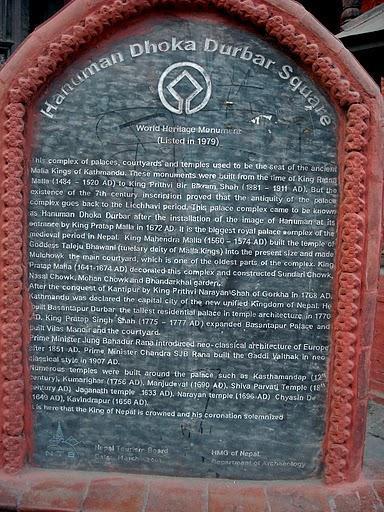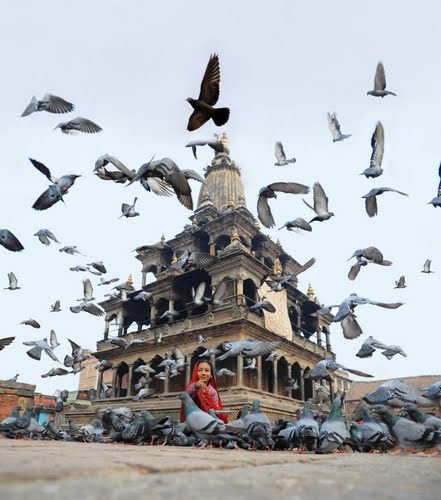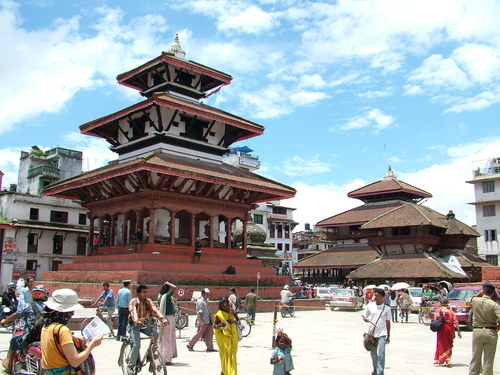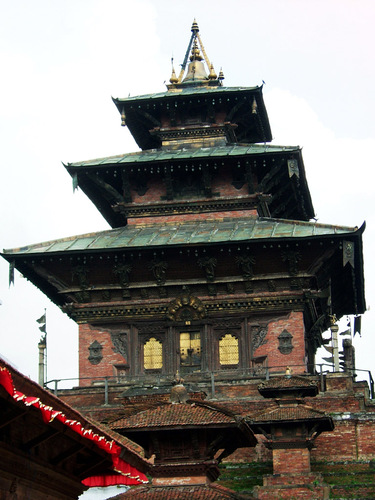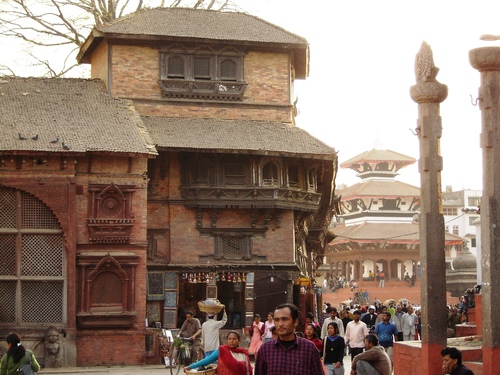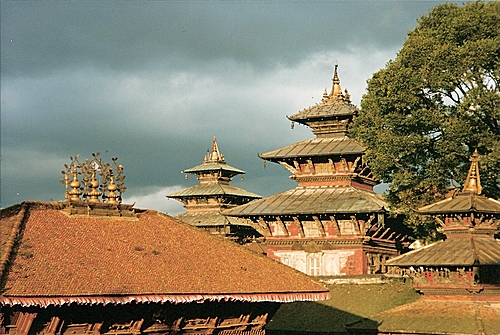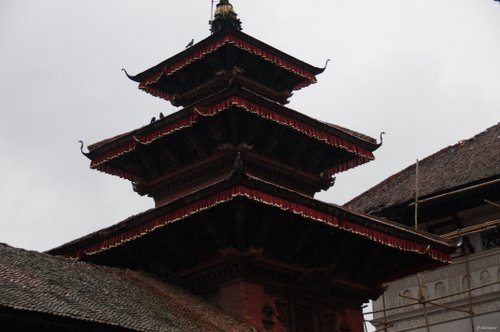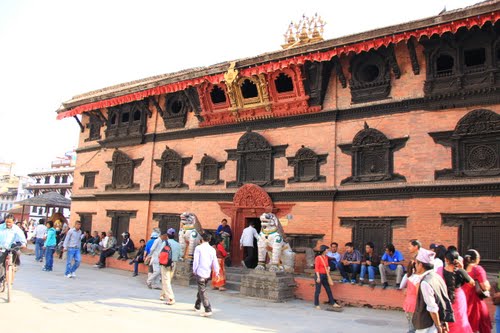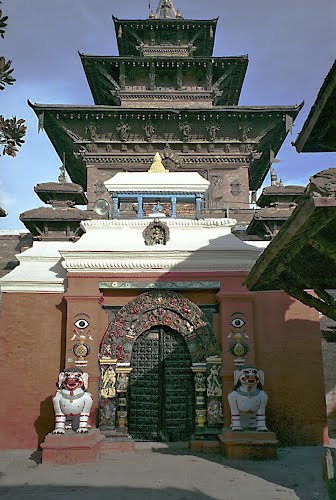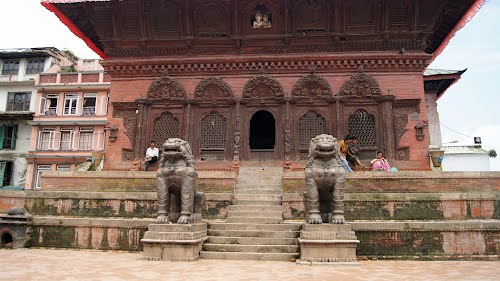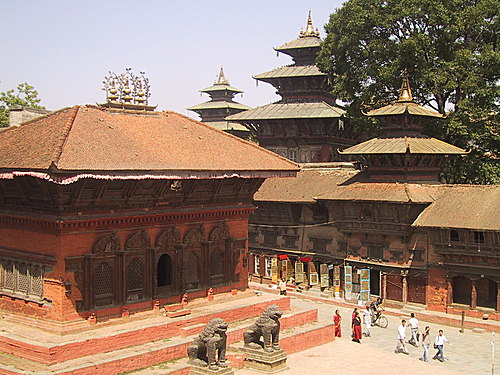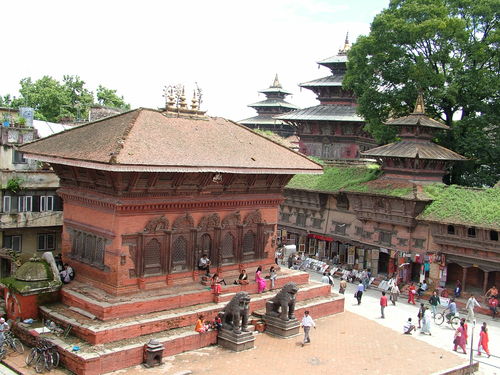Kathmandu Durbar Square in front of the old royal palace of the former Kathmandu Kingdom is one of three Durbar Squares in the Kathmandu Valley in Nepal, all of which are UNESCO World Heritage Sites.
Several buildings in the Square collapsed due to a major earthquake on 25 April 2015. Durbar Square was surrounded with spectacular architecture and vividly showcases the skills of the Newar artists and craftsmen over several centuries. The Royal Palace was originally at Dattaraya square and was later moved to the Durbar square.
The Kathmandu Durbar Square held the palaces of the Malla and Shah kings who ruled over the city. Along with these palaces, the square surrounds quadrangles, revealing courtyards and temples. It is known as Hanuman Dhoka Durbar Square, a name derived from a statue of Hanuman, the monkey devotee of Lord Ram, at the entrance of the palace.
History and construction
The preference for the construction of royal palaces at this site dates back to as early as the Licchavi period in the third century. Even though the present palaces and temples have undergone repeated and extensive renovations and nothing physical remains from that period. Names like Gunapo and Gupo, which are the names referred to the palaces in the square in early scriptures, imply that the palaces were built by Gunakamadev, a King ruling late in the tenth-century. When Kathmandu City became independent under the rule of King Ratna Malla (1484–1520), the palaces in the square became the Royal Palaces for its Malla Kings. When Prithvi Narayan Shah invaded the Kathmandu Valley in 1769, he favored the Kathmandu Durbar Square for his palace. Other subsequent Shah kings continued to rule from the square until 1896 when they moved to the Narayan Hiti Palace.
The square is still the center of important royal events like the coronation of King Birendra Bir Bikram Shah in 1975 and King Gyanendra Bir Bikram Shah in 2001.
Though there are no written archives stating the history of Kathmandu Durbar Square, construction of the palace in the square is credited to Sankharadev (1069–1083). As the first king of the independent Kathmandu City, Ratna Malla is said to have built the Taleju temple in the Northern side of the palace in 1501. For this to be true then the temple would have had to have been built in the vihara style as part of the palace premise surrounding the Mul Chok courtyard for no evidence of a separate structure that would match this temple can be found within the square.
Construction of the Karnel Chok is not clearly stated in any historical inscriptionsб although, it is probably the oldest among all the courtyards in the square. The Bhagavati Temple, originally known as a Narayan Temple, rises above the mansions surrounding it and was added during the time of Jagajaya Malla in the early eighteenth century. The Narayan idol within the temple was stolen so Prithvi Narayan Shah replaced it with an image of Bhagavati, completely transforming the name of the temple.
The oldest temples in the square are those built by Mahendra Malla (1560–1574). They are the temples of Jagannath, Kotilingeswara Mahadev, Mahendreswara, and the Taleju Temple. This three-roofed Taleju Temple was established in 1564, in a typical Newari architectural style and is elevated on platforms that form a pyramid-like structure. It is said that Mahendra Malla, when he was residing in Bhaktapur, was highly devoted to the Taleju Temple there, the Goddess being pleased with his devotion gave him a vision asking him to build a temple for her in the Kathmandu Durbar Square. With a help of a hermit, he designed the temple to give it its present form and the Goddess entered the temple in the form of a bee.
His successors Sadasiva (1575–1581), his son, Shiva Simha (1578–1619), and his grandson, Laksmi Narsingha (1619–1641), do not seem to have made any major additions to the square. During this period of three generations the only constructions to have occurred were the establishment of Degutale Temple dedicated to Goddess Mother Taleju by Shiva Simha and some enhancement in the royal palace by Laksminar Simha.

